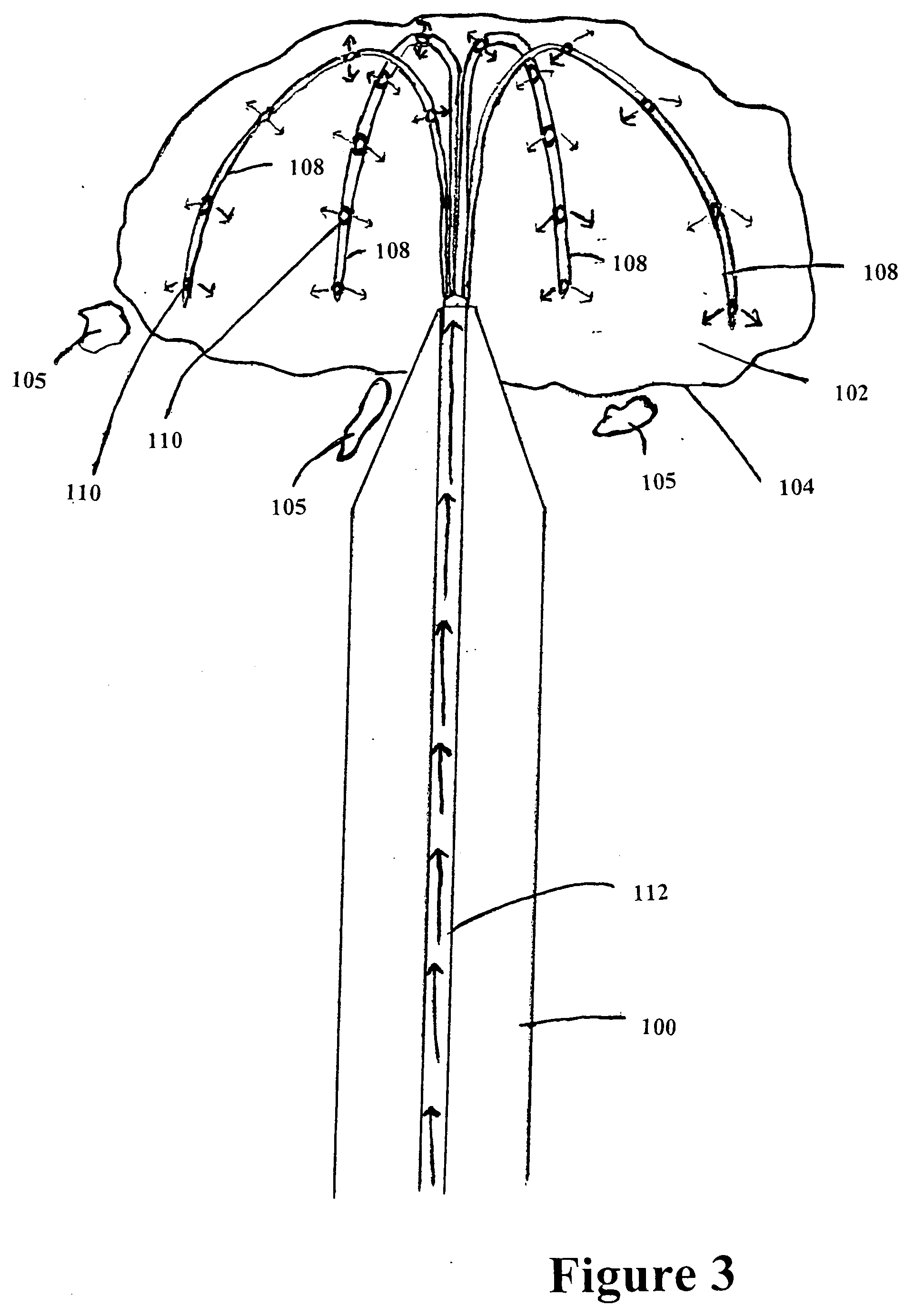Tumor ablation in combination with pharmaceutical compositions
a composition and chemotherapy technology, applied in the field of chemotherapy and chemotherapy, can solve the problems of high localization heat, poor localization, and large damage to healthy tissu
- Summary
- Abstract
- Description
- Claims
- Application Information
AI Technical Summary
Benefits of technology
Problems solved by technology
Method used
Image
Examples
Embodiment Construction
[0048] In view of the foregoing, the present invention, through one or more of its various aspects, embodiments and / or specific features or sub-components, is thus intended to bring out one or more of the advantages that will be evident from the description. The present invention is described with frequent reference to radio frequency ablation and p53. It is understood that radio frequency and p53 are merely examples of a specific embodiment of the present invention, which is directed generically to the therapeutic combination of ablation and tumor suppression compositions within the scope of the invention. The terminology, therefore, is not intended to limit the scope of the invention.
[0049] Cancer has traditionally been approached either systemically with chemotherapy, or locally with surgery or radiotherapy. Recent advancements in minimally invasive therapies are adding another tool to the anti-cancer arsenal. Thermal ablation is heating tumors so hot that the tumor cells die. I...
PUM
| Property | Measurement | Unit |
|---|---|---|
| length | aaaaa | aaaaa |
| nucleic acid sequence | aaaaa | aaaaa |
| anti-tumor pharmaceutical composition | aaaaa | aaaaa |
Abstract
Description
Claims
Application Information
 Login to View More
Login to View More - R&D Engineer
- R&D Manager
- IP Professional
- Industry Leading Data Capabilities
- Powerful AI technology
- Patent DNA Extraction
Browse by: Latest US Patents, China's latest patents, Technical Efficacy Thesaurus, Application Domain, Technology Topic, Popular Technical Reports.
© 2024 PatSnap. All rights reserved.Legal|Privacy policy|Modern Slavery Act Transparency Statement|Sitemap|About US| Contact US: help@patsnap.com










